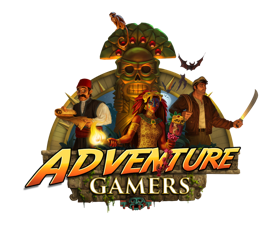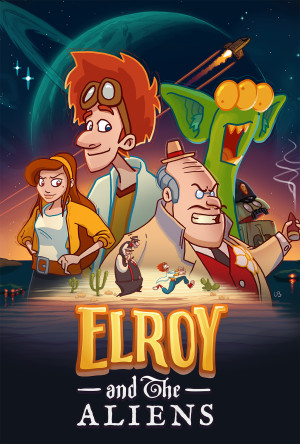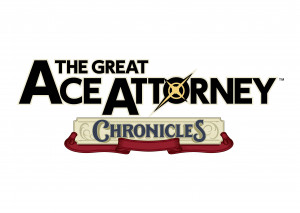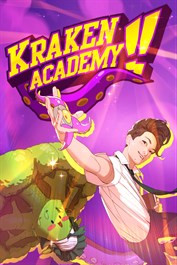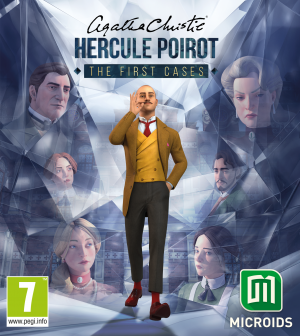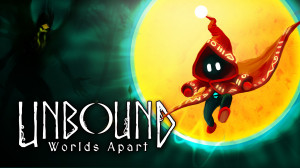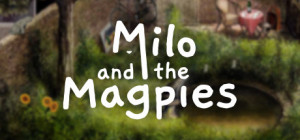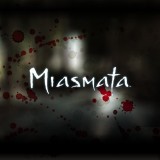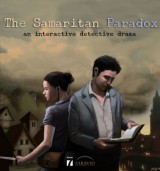Review for Life Is Strange: True Colors
Life Is Strange: True Colors feels like a breath of fresh air for the long-running series. Whilst featuring some recognisable hallmarks of previous titles – a story about growing up, full of choices and drama – it also breaks away from at least some of the pitfalls – cheesy dialogue – that befell its predecessors. A few niggles from previous games do still remain at points, like dull fetch quests, but this more grounded, mature direction along with a well-written, brand new playable lead and the gorgeous mountain setting makes this one of the most engaging franchise instalments yet.
You play Alex Chen, a girl in her early twenties who has arrived in the picturesque town of Haven to reconnect with her long-lost brother Gabe, after what seems to have been a difficult childhood spent apart. But after just a brief time getting to know Gabe in your newfound home, he's killed in an unfortunate accident near the town's mines. Except, as these things always go, you soon begin to wonder if it was an accident after all. And so with your new friends Steph and Ryan you decide to investigate, getting to know the townsfolk's lives and secrets as you go along.
On PC you move Alex with the WASD keys, using your mouse as a camera and left-clicking on highlighted objects of interest, which Alex will then normally either read or react to. Some of these will advance the story, but many, like scribbles in a diary or a garden gnome sitting atop a desk, serve only to add a little more detail to the backstories and day-to-day lives of Haven's inhabitants. The novel aspect to this game's protagonist is that Alex is an empath, to the extent that she's able to not only perceive how people are really feeling about a situation, but also what they're actually thinking at that time. This means that some people, and even certain objects with a special icon can be interacted with via right-click, which will their reveal their respective moods through differently coloured auras, as well as their thoughts at that moment (or for particular objects, the memories associated with them, which get added to Alex's journal – more on that in a moment).
The emotions you see are a little basic in their appearance (a red aura for anger, a blue one for sadness, etc.) and in what you can actually sense; there isn't much subtlety in the variation of feelings Alex encounters in her friends and fellow residents. These powers do, however, lead to you making some big choices in the main storyline, such as whether to remove a person's anger from them (literally taking on the feelings yourself so they don’t have to deal with them anymore, a possibly dangerous move for Alex because of how unstable the emotions are) or leave them with it. Such major decisions, often encountered at the end of a chapter, are shown as split-screen choices, one of which you'll have to move your cursor over and choose.
I was often torn over these decisions, partly because the game does such a good job of making you care about the characters that you're always worried you'll pick something that will backfire. Thankfully for the most part, unlike previous Life Is Strange games, there are fewer incidents of being tricked into choosing what looks like a clearer decision that then has terrible results. Both choices do still have consequences and sometimes it's not clear what they may be, but it's rarer that you'll feel misled into selecting something you couldn't have possibly foreseen happening.
Some of the ways developer Deck Nine has integrated Alex's powers to make them fun is in the side quests you can discover. Being able to essentially read people's minds means you can get up to all kinds of entertaining things with Haven's residents if you feel like it, from helping a man guess the exact number of jelly beans in a jar at the local town fair, to giving a runner who you can tell is feeling insecure about herself a confidence boost. Most of the quests are pretty simple to complete and are also entirely optional, but they all add a lot of welcome colour to the cast. And whilst most of these missions don't seem to effect the main story ending in any huge way (except for maybe making some of the main characters warm to you a little more), as with all Life Is Strange games there's a summary at the end of each chapter (five in total here) showing the choices you made and any you missed, so completionists can work out what they've still got left to discover in the game.
Although not merely a side quest, this spirit of real adventure is most noticeable in chapter three. Alex is tasked with guiding a young boy named Ethan through a LARP (live-action role playing) game spread across the entirety of Haven, with many of the townsfolk taking part. And take part they do, with great gusto – dressing up in costumes and semi-transforming whole pubs and record shops (well, their signs and some of their interiors changed, at least) into Ye Olde taverns and potion sellers. As Ethan's bard, Alex has to help him find three “soul gems” that different characters (hilariously, mainly your poor friend Ryan using various strained accents and costumes) across the map possess, along the way trading riddles for coin. There are multiple ways you can get to the final battle with an evil king: do you buy a gem off the potion master if you've managed to amass enough coins, or is there another way to get it if you haven't?
What’s most charming about this chapter is that by the time of the boss fight itself (in which you have to do damage with your spells like a proper turn-based action game) Ethan is so caught up in the imaginary world everyone has created that by using your special powers, you too can see the town as he sees it: with the characters suddenly gaining not only full armour but also health bars, and the spells you cast on the final boss actually being visualised as sparks and flames like a real RPG, rather than just extravagant words being shouted at each other. It's a really fun, joy-filled chapter with plenty of attention to detail, without outstaying its welcome.
This chapter is also when you start to discover that there are romantic options available in the game. Alex is bisexual, so whether you decide you want to romance one of her friends Ryan or Steph, either (or neither!) is possible and makes sense for the character. As a sucker for flirting in games (times are hard), I really enjoyed deciding who I was going to romance and choosing the sauciest dialogue options (although there's nothing racier than a kiss to look forward to if you do end up succeeding in that respect).
On the flip side of the LARP chapter, there are still quite a few mandatory fetch-style quests to complete, especially earlier on in the story. As with the previous series titles, this often means searching rooms for a particular object that might be hidden underneath another one. That basically means a lot of clicking on things until you find what you're looking for, and whilst it's an easy way for the developers to get you to interact with lots of things you might not have bothered with otherwise, it only serves to slow the pace of the game down and feels very tedious until you succeed.
Not everything in Haven is fun and games, of course, as there’s a very real mystery to solve with immense importance to Alex. You can learn more about what the protagonist is thinking through a dedicated menu that has different tabs for her journal, her texts and a not-very-well-disguised version of Facebook and MySpace, here called “MyBlock.” Like in the game’s predecessors, story events will trigger characters to text you, which you can keep track of in the SMS tab (but not respond to directly – if Alex does respond it's always already been written and sent). You can also scroll through recent MyBlock social media posts put up by the townsfolk, which again will change and adapt as new things happen. Declining to read through any of these won't mean you'll miss out on big chunks of plot, and you might not be interested in scrolling through lines of text, but it does serve as another and clever (and much more realistic) way to find out what others are thinking about the big events Alex is experiencing without having them exclaim it out loud, even if sometimes the writers do tend to hammer the point home a little too enthusiastically.
As you might expect, looking through Alex's journal is a more personal and introspective experience. Here you can read through what she's called “memories,” or instances of when she's sensed strong reactions from people's emotions. And because she's still an angst-ridden young twenty-something, each chapter of these memories also includes a song she's written about the time. I found this just a tad cheesy, but I suppose it again does help players relate to the struggles Alex is going through without spelling them out too obviously.
A big part of my connection to Alex came from the excellent voice acting by Erika Mori. In fact, the voice-overs are incredibly strong throughout the whole of True Colors, with the entire cast really transforming each character into someone memorable and worth caring about, adding extra drama to those life-or-death decisions you might have to make. There’s goofy Ryan, a close friend who’s always wearing his heart on his sleeve, and your other best friend, the loyal but slightly unpredictable Steph. Among wider cast there’s also barely functioning alcoholic Duckie and friendly yet worryingly forgetful Eleanor, who works at the flower shop. You can choose to be as big or as small a part of these characters’ stories as you like, but the acting for each really helps you want to be more involved in their worlds.
Equally excellent is the soundtrack, which features plenty of licensed songs from the likes of Radiohead and indie rock singer-songwriter Phoebe Bridgers, as well as new tunes by musicians such as American YouTuber and singer-songwriter mxmtoon, otherwise known as Maia, who also provides the singing voice for Alex throughout the game and performs an incredibly touching and delicate version of our protagonist through her melodies. Her rendition of Radiohead's “Creep” is particularly poignant, conveying so effectively and succinctly in song what reams of dialogue and exposition couldn't.
Whilst most of these songs have their place in the story and serve to add an extra layer of emotion to what can already be some very shocking or sad scenes, one section, when Dido's “Thank You” briefly plays, feels very jarring and misses the mark, almost accidentally turning the scene into a comedic one. And although there is an option for live-streamers to have any licensed music be turned off automatically in the menu so they don't have any possible copyright issues, this means having to sit through maybe two or three minutes of silence whilst characters on-screen awkwardly tap their feet to nothing.
Looking as good as it sounds, Haven is a lush, beautiful 3D town to explore, with the sunlight glinting off the bright mountainside lake and every location, whether Steph's packed record store or the trusty watering hole, is bursting to the brim with tiny little details. The developers have also done a great job with the facial animations of the characters and the 3D character models themselves. Alex in particular is very expressive, which again only helps you feel more invested in her fate.
The resolution to the mystery of what happened to Gabe always plays out in the same way no matter what decisions you’ve made along the way, just tweaked depending on how much trust you’ve earned from those around you. After that, however, there are several endings to Alex’s own story and how she chooses to go about living her life. Only the choices you made about who, if anyone, to romance will affect these finales, which can make some of the other seemingly big choices feel a little redundant after the fact.
This also means that apart from getting all of the various collectibles, there’s not a huge point in replaying the bulk of the game, as most of the decisions related to the ending you get happen near the end of the story. You can, however, replay individual segments in order to complete any side quests you may have missed or skipped the first time around. There’s no manual save system in True Colors, but luckily the autosave system is pretty robust, always loading into the last building you entered. And helpfully, if you do want to go back for the sake of completeness, you don’t have to play through that whole chapter. Instead, different moments are split up into scenes, each with an icon next to it indicating how many collectibles, if any, are left to be found in that section. This makes it even easier and more enjoyable to get lost in fulfilling all the needs of Haven’s residents.
The story should take at least ten hours to finish a single time through, and whilst containing several twists along the way, there weren’t many plot points that I didn't see coming. Near the end everything gets a little melodramatic and one or two too many emotional storylines are thrown in just to shock rather than to add any value. Thankfully the narrative is allowed to calm down a beat before finishing, returning instead to the things that make True Colors special – the relationships you choose to grow or let slide along the way, highlighted even more by a great cast and script. These strengths, plus the introduction of one of the most likeable and appealing protagonists of any game in the series, make it a definite must-play for existing Life Is Strange fans and newcomers alike.
